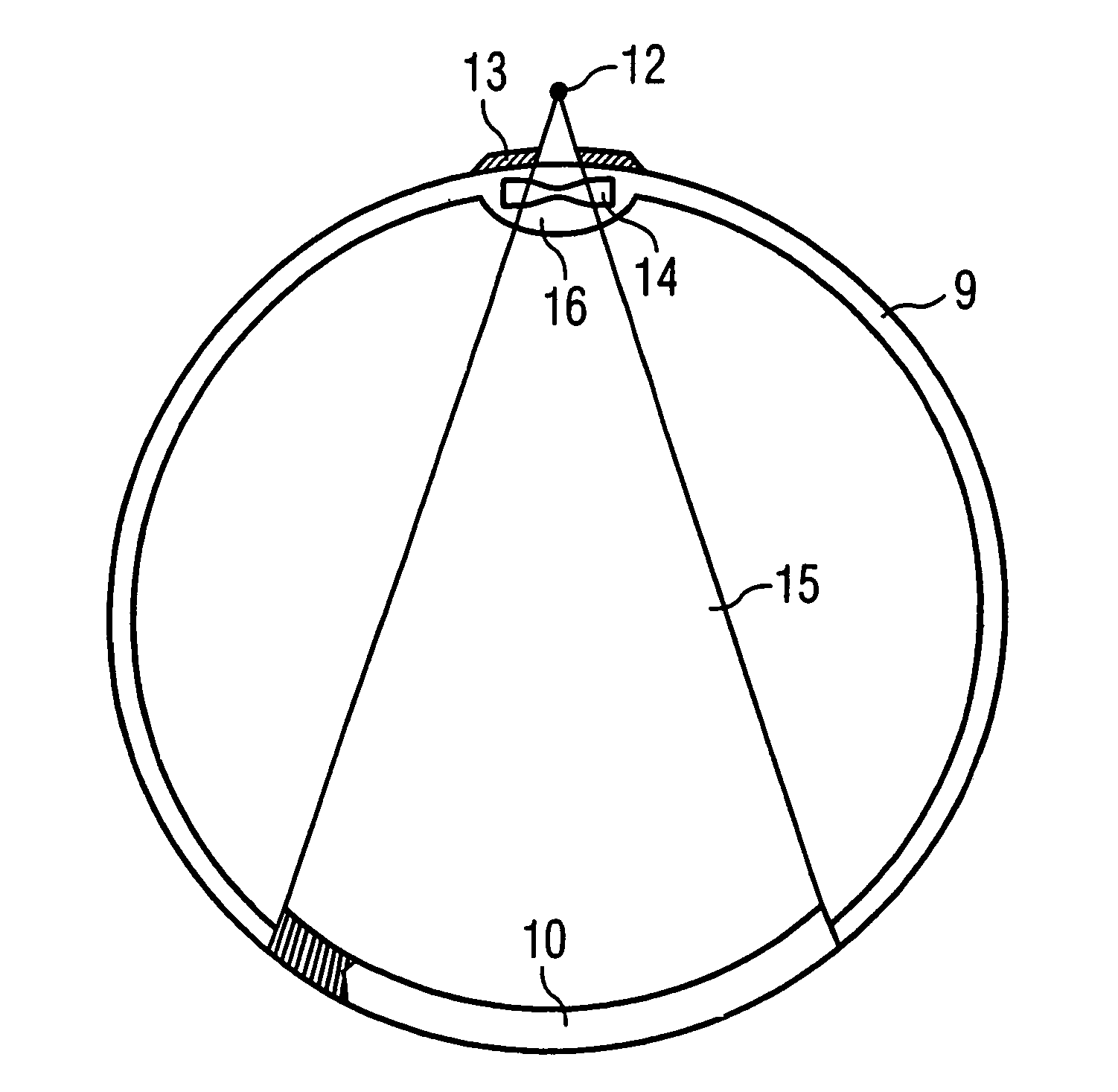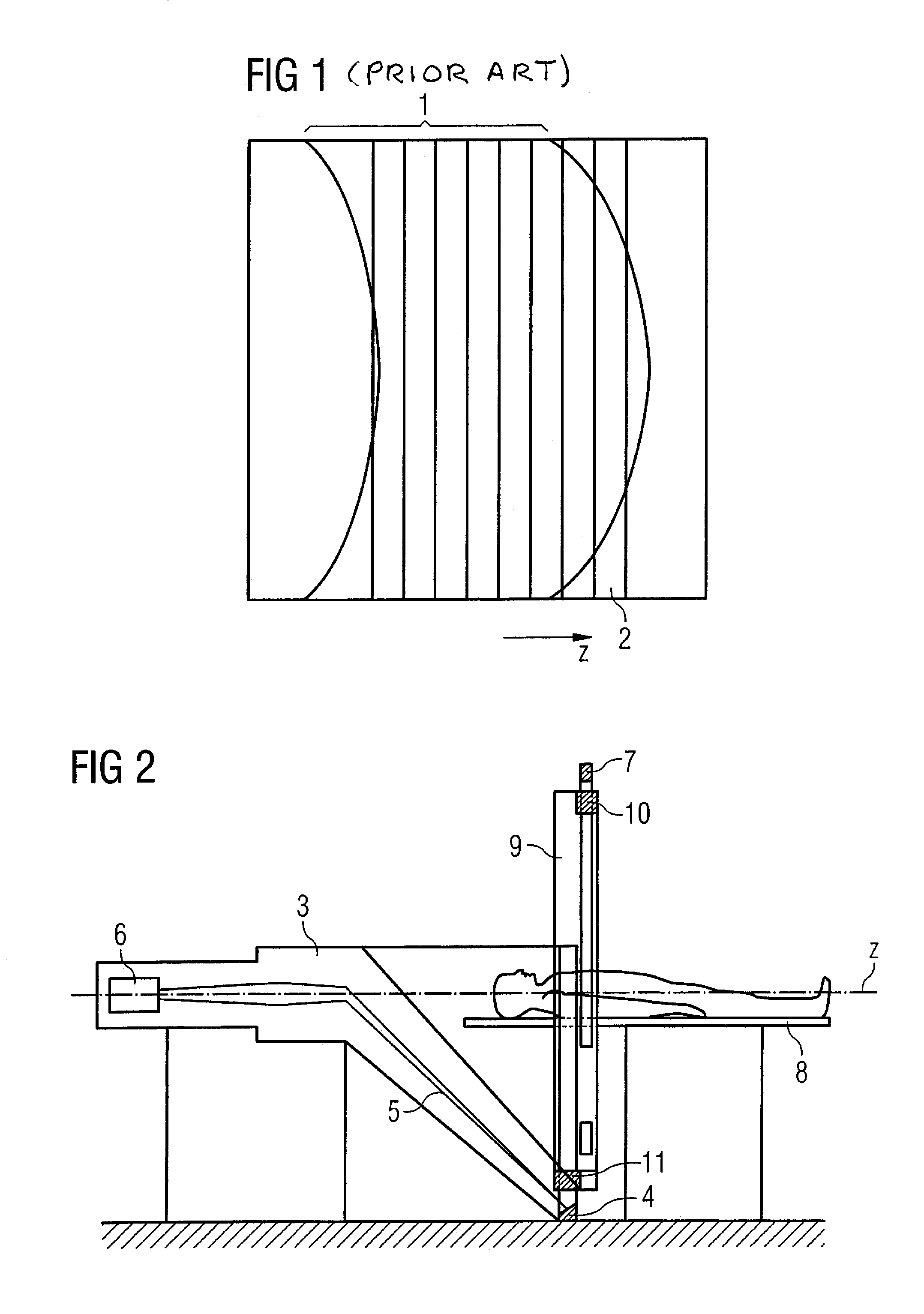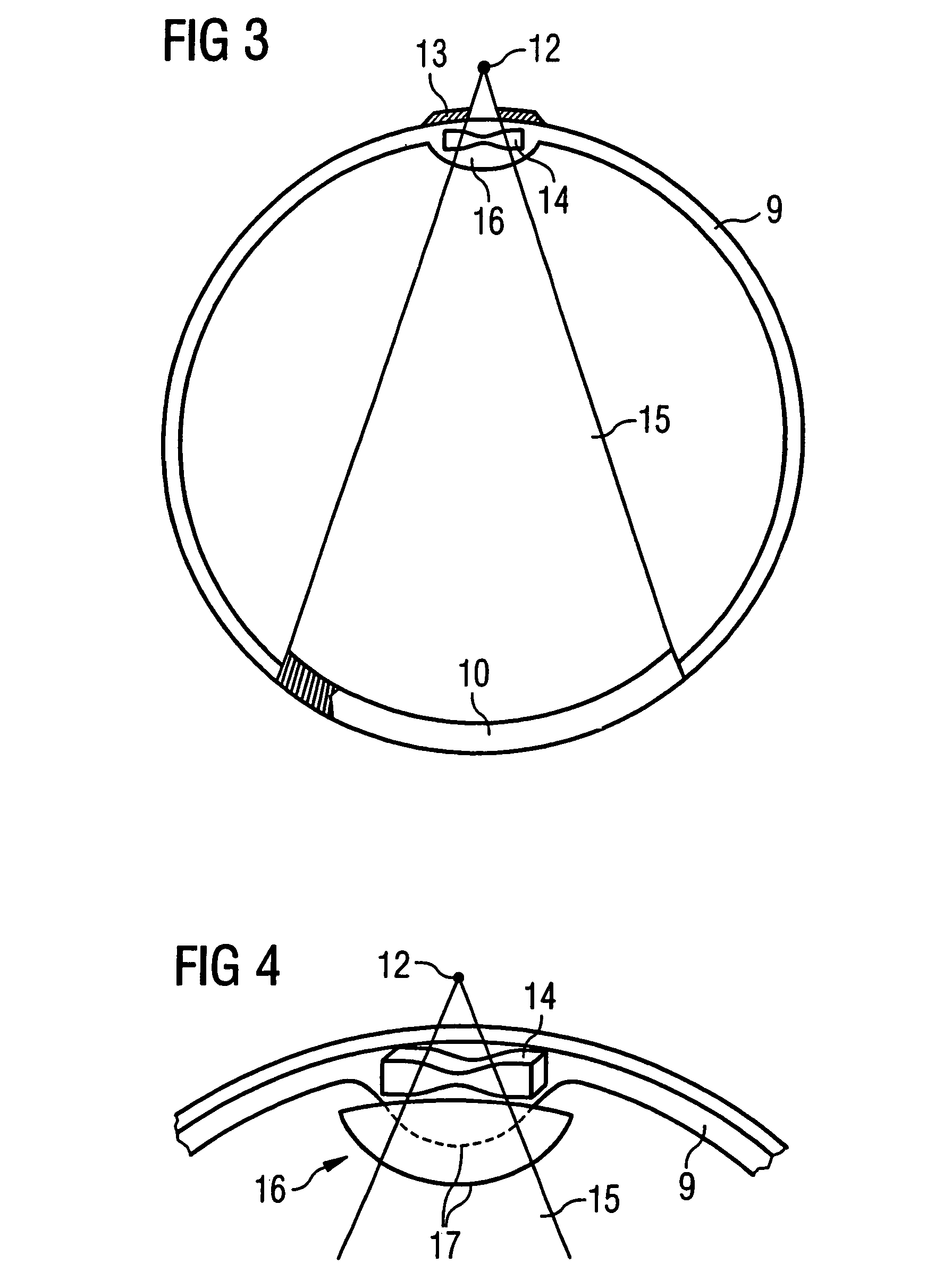X-ray computed tomography apparatus for fast image acquisition
a computed tomography and image acquisition technology, applied in the field of x-ray computed tomography apparatus, can solve the problems of reducing image quality and dose efficiency relative to computed tomography systems of the third generation, maximum rotation speed, and limiting the rotation speed of the rotary frame. achieve the effect of improving image quality and fast image acquisition
- Summary
- Abstract
- Description
- Claims
- Application Information
AI Technical Summary
Benefits of technology
Problems solved by technology
Method used
Image
Examples
Embodiment Construction
[0033]FIG. 1 was already explained in connection with the discussion of the prior art, and shows the banana-shaped distortion of the projection 1 of the x-ray beam on the detector lines 2 of an 8-line x-ray detector in known computed tomography systems of the 5th generation. This distortion materializes due to the annular Z-collimator used in these systems.
[0034]Such a distortion can be avoided with the inventive computed tomography apparatus by suitable shaping of the lamellae of the Z-collimator on the rotating carrier frame. FIG. 2 shows a schematic representation of an exemplary design of a computed tomography apparatus according to the present invention. In this example, the apparatus has an x-ray generating device 3 with a target 4 that extends as a partial ring through approximately 210° around the examination volume. The x-ray focus on the target 4 (which, for example, is composed of tungsten) is generated with an electron beam 5 that is focused from an electron gun 6 onto a...
PUM
 Login to View More
Login to View More Abstract
Description
Claims
Application Information
 Login to View More
Login to View More - R&D
- Intellectual Property
- Life Sciences
- Materials
- Tech Scout
- Unparalleled Data Quality
- Higher Quality Content
- 60% Fewer Hallucinations
Browse by: Latest US Patents, China's latest patents, Technical Efficacy Thesaurus, Application Domain, Technology Topic, Popular Technical Reports.
© 2025 PatSnap. All rights reserved.Legal|Privacy policy|Modern Slavery Act Transparency Statement|Sitemap|About US| Contact US: help@patsnap.com



